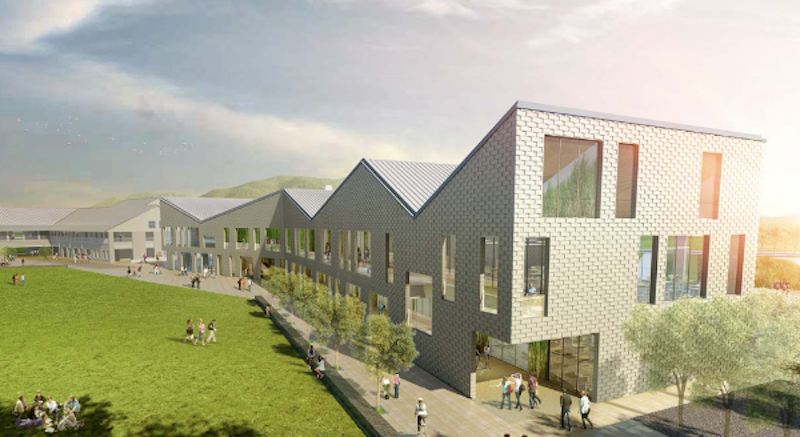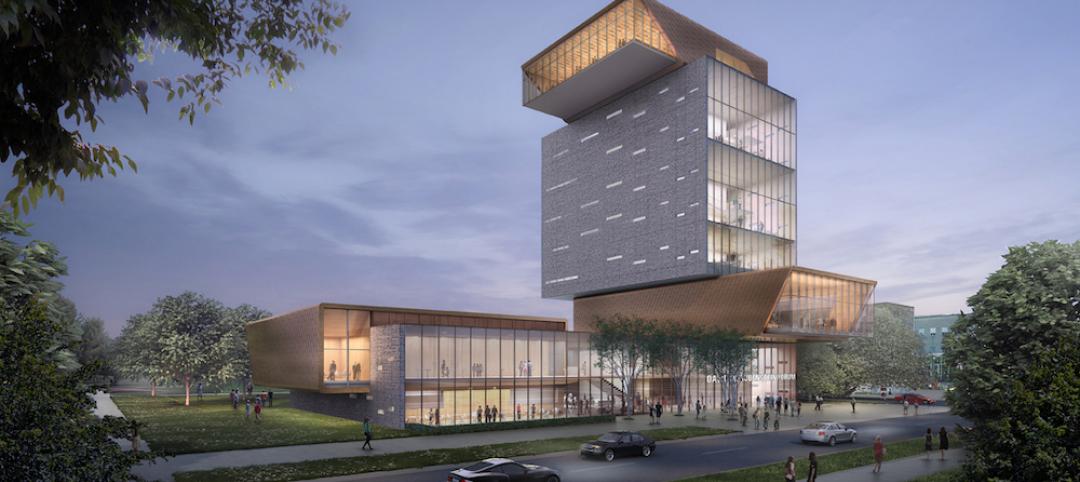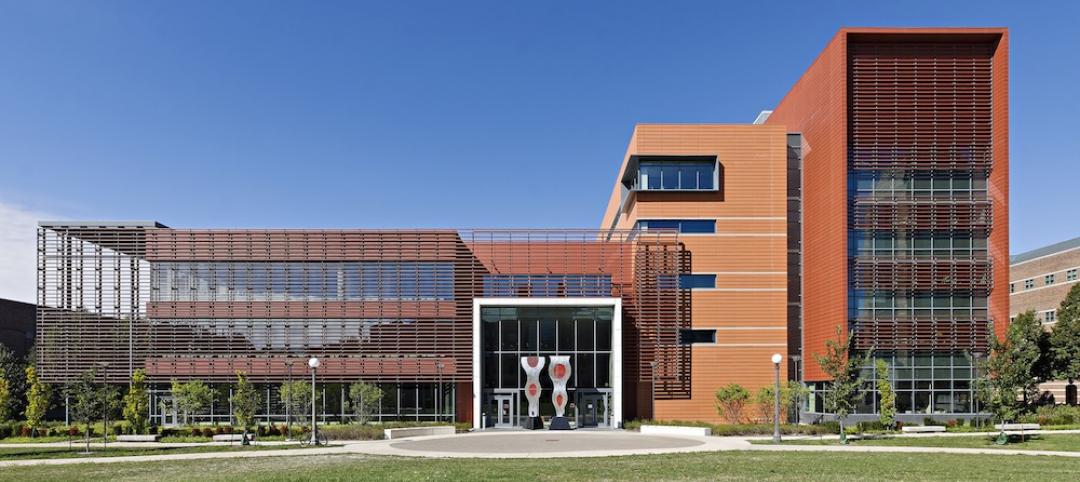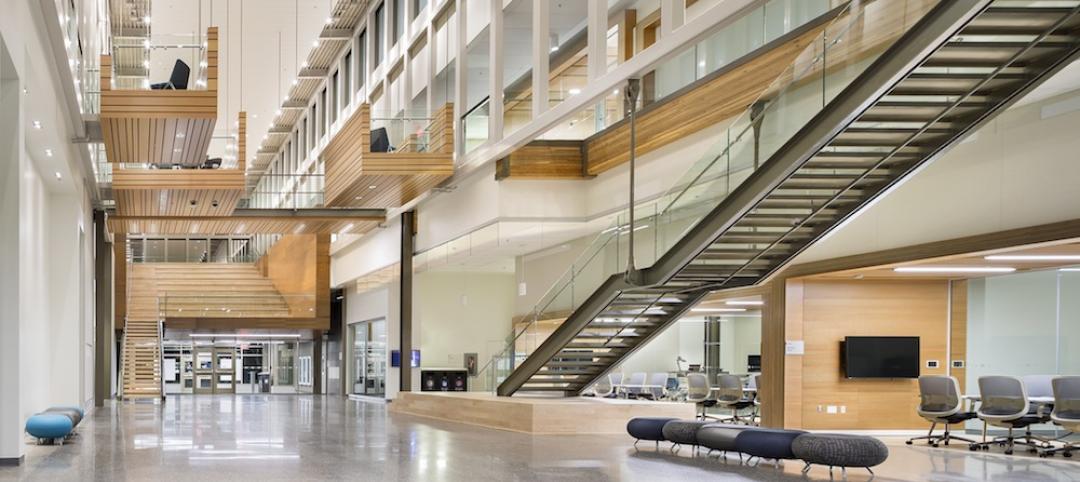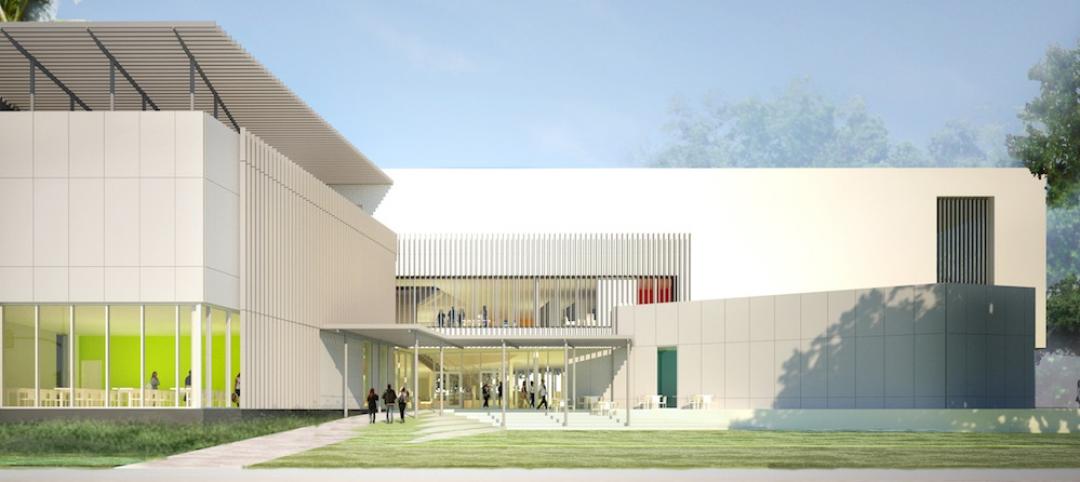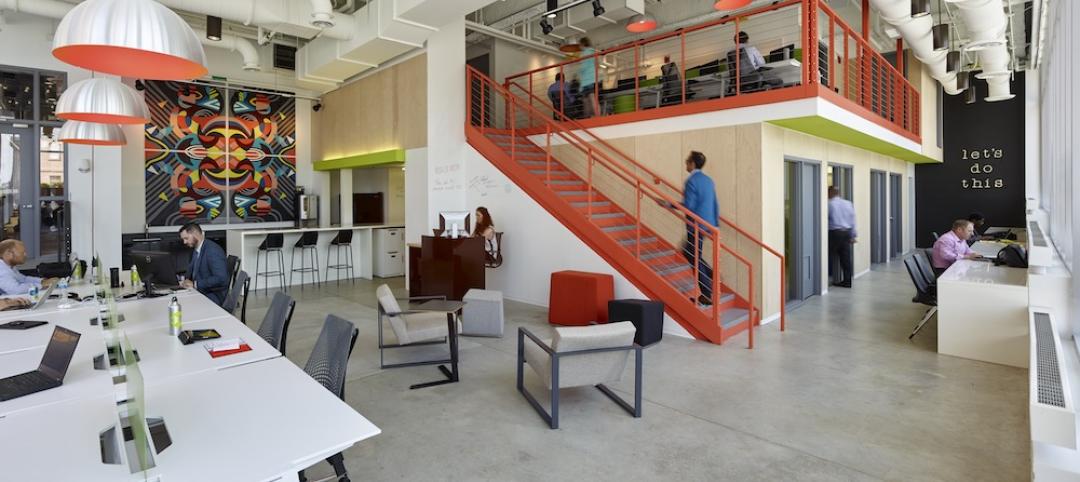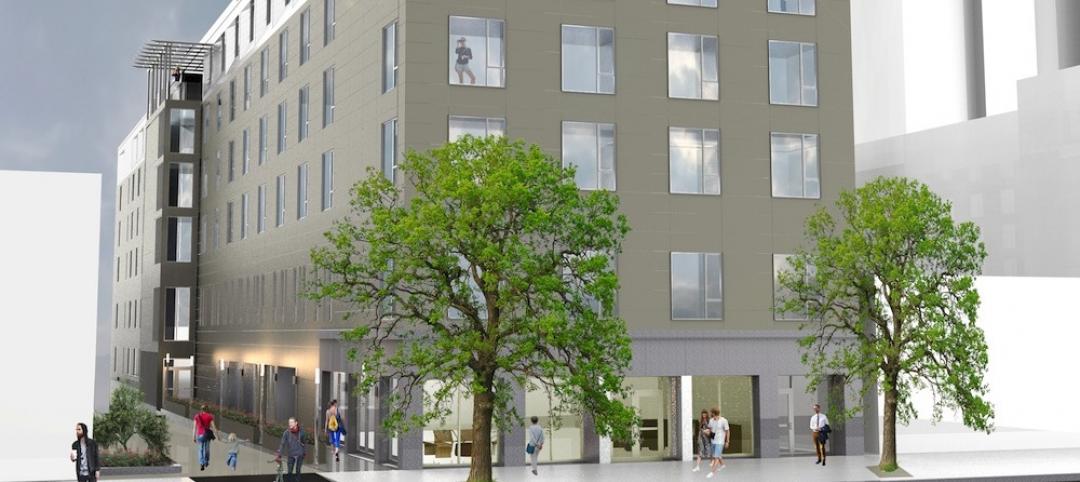The University of Hawaii West Oahu campus is nearing the completion of its newest building, the 43,000-sf Administration and Allied Health Building.
The new $36 million facility consolidates office space for campus leadership into a single location and also provides general purpose classrooms and wet/dry teaching laboratories for microbiology, cellular/molecular, anatomy/physiology, and organic chemistry.
Designed by Perkins+Will’s LA Studio in collaboration with KYA Design Group, the building design was inspired by the gable roof form of historic sugar mills common to the area. The building enclosure utilizes CMU (concrete masonry unit) as a monolithic skin with its texture and pattern inspired by traditional Hawaiian kapa (cloth).
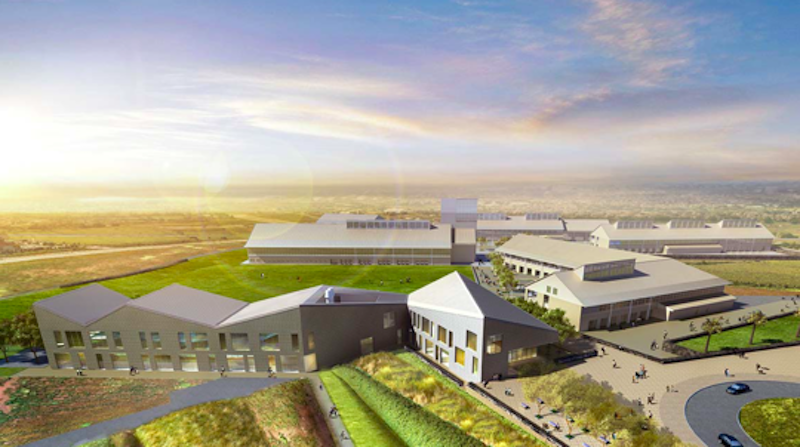 Courtesy of Perkins+Will's LA Studio.
Courtesy of Perkins+Will's LA Studio.
On the southern facade, deep, open-air lanais (balconies) connect the interior and outdoor circulation. The lanais act as a natural gathering space, an extension of the classroom, and are connected visually and physically to the Great Lawn.
“The challenge was how to best consolidate the distinct functions of teaching labs and classrooms within the same building as office space for the campus administration,” says Mark Tagawa, Associate Principal at Perkins+Will’s LA Studio, in a release. “We wanted to create a facility that interacted with the landscape in a sympathetic way, through water management, landscaping, and materiality. Cultural and ecological appropriateness was our filter for all design decisions.”
 Courtesy of Perkins+Will's LA Studio.
Courtesy of Perkins+Will's LA Studio.
The campus is located on former sugar cane land with a legacy of over 100 years of agriculture. Sustained tilling has left the topsoil depleted of organic matter, which decreases the ability to retain water and support new plant life. The project seeks to rectify this issue by restoring, healing, and rebuilding the topsoil via nitrogen fixing planting, implementing onsite ecological water and nutrient management, and regenerating and reviving native landscaping.
The Administration & Allied Health Building will open to students in spring 2019.
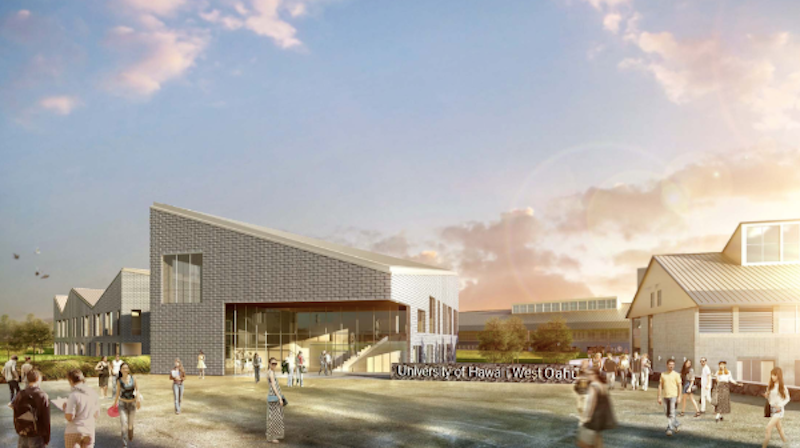 Courtesy of Perkins+Will's LA Studio.
Courtesy of Perkins+Will's LA Studio.
Related Stories
Office Buildings | Jun 10, 2016
Form4 designs curved roofs for project at Stanford Research Park
Fabricated of painted recycled aluminum, the wavy roofs at the Innovation Curve campus will symbolize the R&D process and make four buildings more sustainable.
University Buildings | Jun 9, 2016
Designing for interdisciplinary communication in university buildings
Bringing people together remains the main objective when designing academic projects. SRG Design Principal Kent Duffy encourages interaction and discovery with a variety of approaches.
Building Team Awards | May 31, 2016
Gonzaga's new student center is a bustling social hub
Retail mall features, comfortable furniture, and floor-to-ceiling glass add vibrancy to the new John J. Hemmingson Center.
University Buildings | May 26, 2016
U. of Chicago approves Diller Scofidio + Renfro design for new campus building
With a two-story base and 165-foot tower, the Rubenstein Forum will have room for informal meetings, lectures, and other university events.
University Buildings | Apr 27, 2016
SmithGroupJJR’s Electrical and Computer Engineering Building named 2016 Lab of the Year
Sustainable features like chilled beams and solar screens help the University of Illinois research facility use 50% less energy than minimum building energy efficiency standards.
University Buildings | Apr 25, 2016
New University of Calgary research center features reconfigurable 'spine'
The heart of the Taylor Institute can be anything from a teaching lab to a 400-seat theater.
University Buildings | Apr 13, 2016
Technology defines growth at Ringling College of Arts & Design
Named America's “most wired campus" in 2014, Ringling is adding a library, visual arts center, soundstage, and art museum.
University Buildings | Apr 13, 2016
5 ways universities use new buildings to stay competitive
From incubators to innovation centers, schools desire ‘iconic gateways’ that appeal to students, faculty, entrepreneurs, and the community.
University Buildings | Apr 4, 2016
3 key trends in student housing for Boston’s higher education community
The city wants to add 18,500 student residence beds by the year 2030. CannonDesign's Lynne Deninger identifies three strategies that will help schools maximize value over the next decade or so.
University Buildings | Mar 15, 2016
Behnisch Architekten designs Harvard’s proposed Science and Engineering Complex
The 497,000-sf building will be the home of the John A. Paulson School of Engineering and Applied Sciences.


